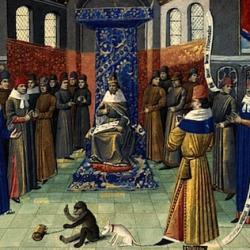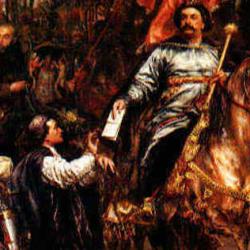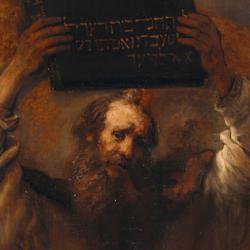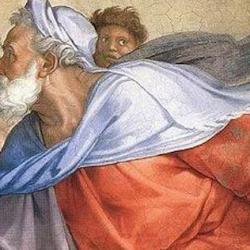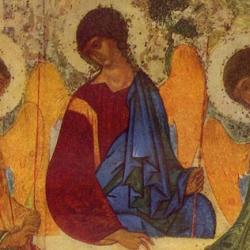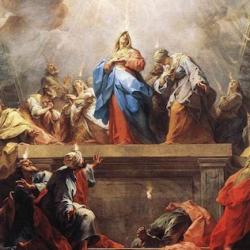In his contribution to The Future of Hope, John Milbank offers a description of postmodernity and suggests ways for the church to respond. Postmodernism may be a thing of the past; we’re supposed to be in post-postmodernity nowadays. Still, much of what Milbank describes is still with us, and some of it is more intensely with us than when Milbank wrote.
In the “postmodern times in which we live, there is no longer any easy distinction to be made between nature and culture, private interior and public exterior, hierarchical summit and material depth; nor between idea and thing, message and means, production and exchange, product and delivery, the state and the market, humans and animals, humans and machines, image and reality; nor between beginning, middle, and end. Everything is made to run into everything else; everything gets blended, undone, and then re-blended. . . . There are no longer any clear centers of control, and this means that new weight is given to plurality and the proliferation of difference. None of these differences ever assumes the status of a distinct essence, however; rather, they are temporary events, destined to vanish and be displaced.”
Modernity sought mastery of nature, but postmodern sensibility denies nature entirely: “people no longer seem to find any need to identify a human essence – no longer is human auto-creation operating within essential parameters.” As a result, “We are our own anarchic laboratory. We can manipulate ourselves into a million shapes. Perhaps the only figure of essence which remains here is the idea that humans are productive. But we are as much the result of productive processes as agents in command of production.”
Distinctions that seemed self-evident to previous ages are blurred: There “no longer are there firm characteristics of childhood, middle age, or old age; no longer are there clear differences (other than the biological ones) between men and women; and no longer is there much heterosexuality as opposed to a single, univocal (and therefore transcendentally ‘homosexual’) proliferation of multiple desires.”
Political discourse hasn’t caught up with the trajectory of culture. As the line between public and private dissolves, “most of our modern ‘liberal’ political discourses start to appear completely meaningless, for they are all predicated on a mutual agreement to protect the right to do what one likes with one’s own, so long as this does not interfere with the rights of the other. How can this criterion any longer apply to the real interlocking ‘rhizome’ of material spaces, or to the fluid highway of virtual space?”
Global capitalism erodes the power of nation-states: “more than ever the market requires the international state-ordering of virtual reality, international legal checks on financial speculations, and international policing of popular, ethnic, and religious dissent.”
Underlying all this blurring of boundaries is the supposition of immanence. In this postmodernism is an extension of the modern secular: “modernity and postmodernity are relentlessly secular, meaning that (1) they evaluate and explain without reference to transcendence; (2) they see finite reality as self-explanatory and self-governing; and (3) they see this finite reality which is the saeculum – the time before the eschaton for Christian theology – as being all that there is.”
It’s tempting to pronounce an anathema against postmodernism and all its works and all its ways. But that misses the genealogy of the postmodern: “postmodernity, like modernity, as a kind of distorted outcome of energies first unleashed by the church itself. If that is the case, then our attitude is bound to be a complex one: not outright refusal, nor outright acceptance, but more an attempt at radical redirection of what we find.”
In Milbank’s view, “Christianity is the religion of the obliteration of boundaries. Secular commentators like Hardt and Negri assume, in all too modern and essential a fashion, that there is some sort of ‘natural’ human desire that demands de-territorialization without end.” But it isn’t. It’s a product of Christianity.
More specifically, “Christianity did, indeed, explode all limits: between nations, between races, between the sexes, between the household and the city, between ritual purity and impurity, between work and leisure, between days of the week, between sign and reality (in the sacraments), between the end of time and living in time, and even between culture and nature, since Jesus advised us to follow the mute example of the lilies of the field.”
All this is the case because ” Christianity violates the boundary between created and creator, immanence and transcendence, humanity and God.”
Milbank suggests that we can sort through the Christian response to postmodernity by thinking about the relation of Old and New, Judaism and Christianity, gospel and law. He invites us to ask, “Is postmodernity the misreading of the gospel beyond the Law? Does it overstress passing beyond boundaries at the expense of the virtue of boundaries?” Does postmodernity carry the gospel’s boundary-bursting agenda into an extreme abolition of all taboos?
More positively, if the answer to this question is Yes, then the Christian solution to postmodernity seems to be an effort at “healing of the rift between the seemingly opposed Christian and Jewish principles,” a clearer recognition that the Christian/Pauline move beyond law in fact fulfills Torah. This would require a recognition of the “co-belonging” of grace and law, in place of a (characteristically Lutheran?) dialectic of law and grace.
A few more specific examples of how Milbank suggests we negotiate the relation of postmodernity and Christianity.
We are “tempted to fall back on an insistence that God has made the human species and all others to be as they should be, and that either nature, or God’s positive law, has given clear and firm guidance for the conduct of human relations. The trouble, though, with this approach is that an open-ended transformation of the natural world has always been regarded by Christian theology as proper to our humanum, and even as intrinsic to the redemption of humanity and the cosmos, looking toward the eschaton.” Since “we have drastically altered both nature and our bodies . . . questions of right and wrong in such matters have never been decidable merely in terms of what has been pre-given by divine design.” Rather than assess by a backward reach to origins, we need to address “questions of right and wrong in those instances more ultimately require a discernment of teleology.”
In response to the postmodern view of absolute, univocal human creativity and fluidity, Christians have to resist the temptation to think of creativity equivocally. Rather, human creativity can be worked out analogically, as in Nicholas of Cusa, for whom “human creative power and natural power are never equal to God, and yet in its very creative exercise, such power participates in the divine Logos or Ars, and thus registers ‘conjecturally’ a sense of how things should develop toward their proper goals.”
We can apply this mode of reasoning to the issue of reproductive technologies. The issue is not whether “it violates the pre-given process of reproduction.” Instead, “we have to ask complex questions about what such procedures will do to human identity – and whether the different identities which may thereby emerge are richer or weaker identities, more viable or more unstable and threatened.”
I don’t agree with Milbank at every point, especially in his discussions of sexual ethics. But the overall pattern he describes is the right one, and the suggestion that issue of law and gospel are at the heart of the matter is a stimulation to further study. It rightly places biblical theology at the heart of our cultural crisis.


